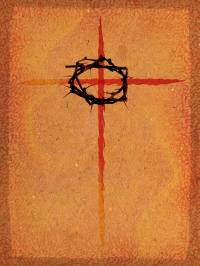Was Jesus Pierced for Our Transgressions?
 |
I recently finished reading Pierced for Our Transgressions: Rediscovering the glory of penal substitution by Steve Jeffery, Mike Ovey, and Andrew Sach. It’s a thorough look at this aspect of what God accomplished at the cross.
I don’t know if it’s been discussed much where you are, but in many parts of the world the idea of penal substitution, the concept that Jesus took our punishment on the cross, has been a big topic of conversation. This book comes from the United Kingdom, where challenges to penal substitution have been very much in the media in the last few years.
Of course, this is something we all should be thinking about. As the authors show, the idea of penal substitution has been taught by the church for 2000 years, and is key to our understanding of salvation. If there’s anything worth meditating on, this would have to be on your list! And this book is not only one way to think it through, but a great reference to keep handy.
The authors look at key Bible passages, how this doctrine fits with theology, penal substitution from a pastoral perspective, historic texts, and they also answer various arguments against certain aspects of penal substitution.
I especially found the last appendix interesting, where the authors talk to preachers and teachers about the illustrations we use to explain what happened at the cross.
Obviously no illustration is "perfect". The Bible uses illustrations that only explain certain aspects of the cross. For example, He was led as a lamb to the slaughter, and as a sheep before its shearers is silent, so He opened not His mouth (Isa 53:7). This illustration is intended to show how Jesus was submissive, how He didn’t fight his accusers. However, Jesus wasn’t a passive victim – He was determined to go to the cross. In that way the illustration breaks down – but it’s only intended to illustrate one aspect of Jesus’ actions.
However, some illustrations we use are terribly flawed, and give a wrong idea completely. For example, maybe you’ve heard the illustration of the Bird Cage, where essentially Jesus pays a price to Satan to set free those tormented by sin. Of course, the Bible says nothing about Satan being paid. Instead, Satan is conquered (Gen 3:15; Col 2:15) , and it’s to God the price of justice must be paid (Gal 3:13; Rom 5:8-10).
The authors give these suggestions for evaluating illustrations. An illustration could be used even if it doesn’t answer each point, but we should be clear about what aspect of a Bible truth we are trying to teach, and be sure that people won’t get confused.
- Does the illustration deny the active, consenting involvement of the Father and the Son?
- Does the illustration imply a conflict between God’s law and God’s will?
- Does the illustration imply that God’s action in averting our punishment is unjust?
- Does the illustration imply a conflict between God’s wrath and God’s will?
- Does the illustration imply a conflict between God’s attributes?
- Does the illustration imply that God did not forordain Christ’s atoning work?
- Does the illustration imply that no-one actually benefits from God’s saving work?
Of course the book explains each of these in more depth, but I’ll let you get the book yourself and read more!
